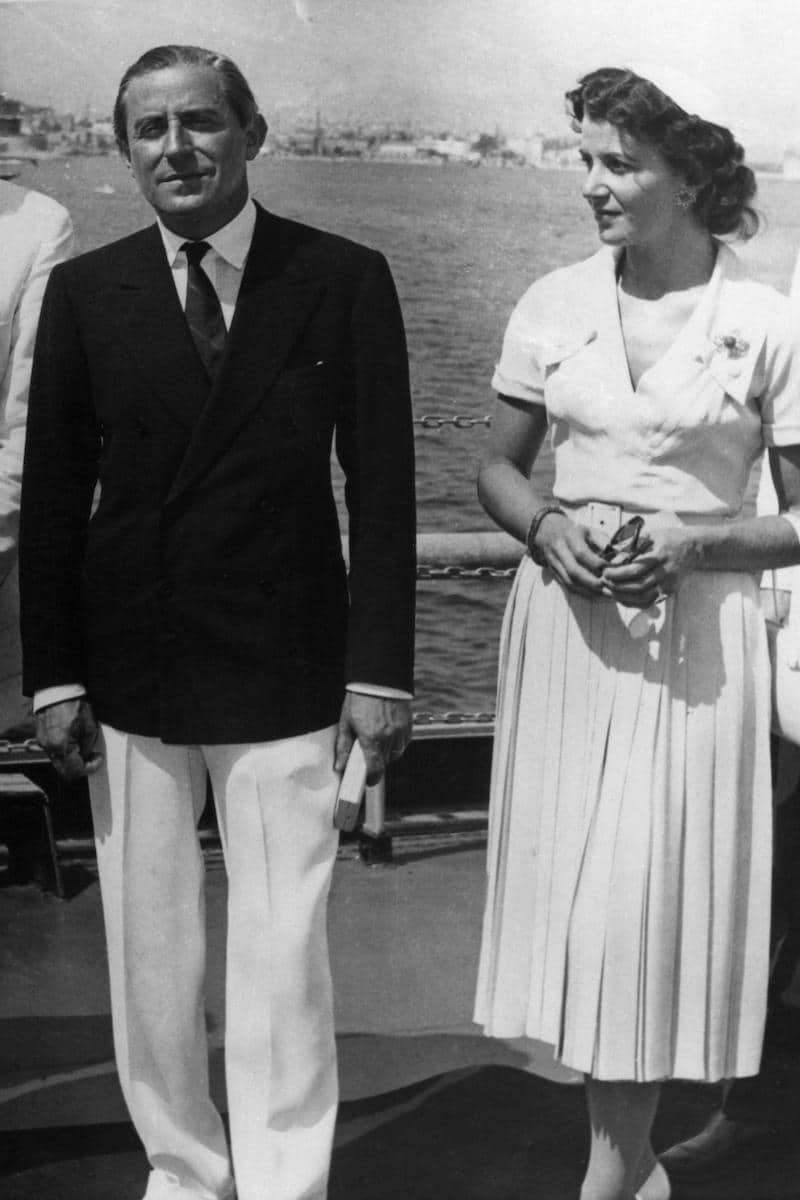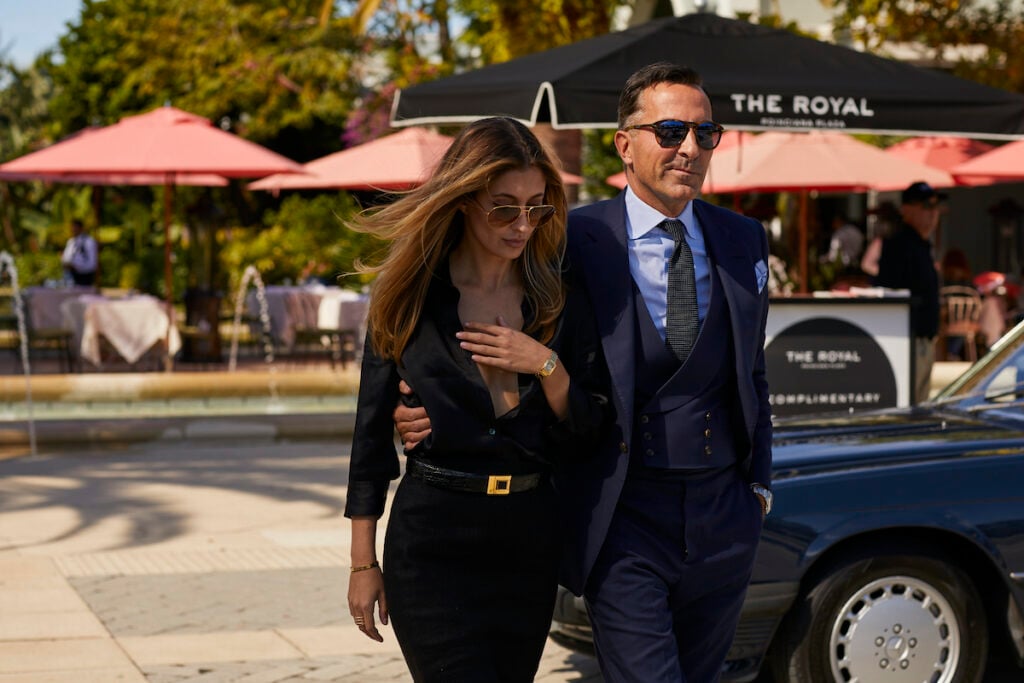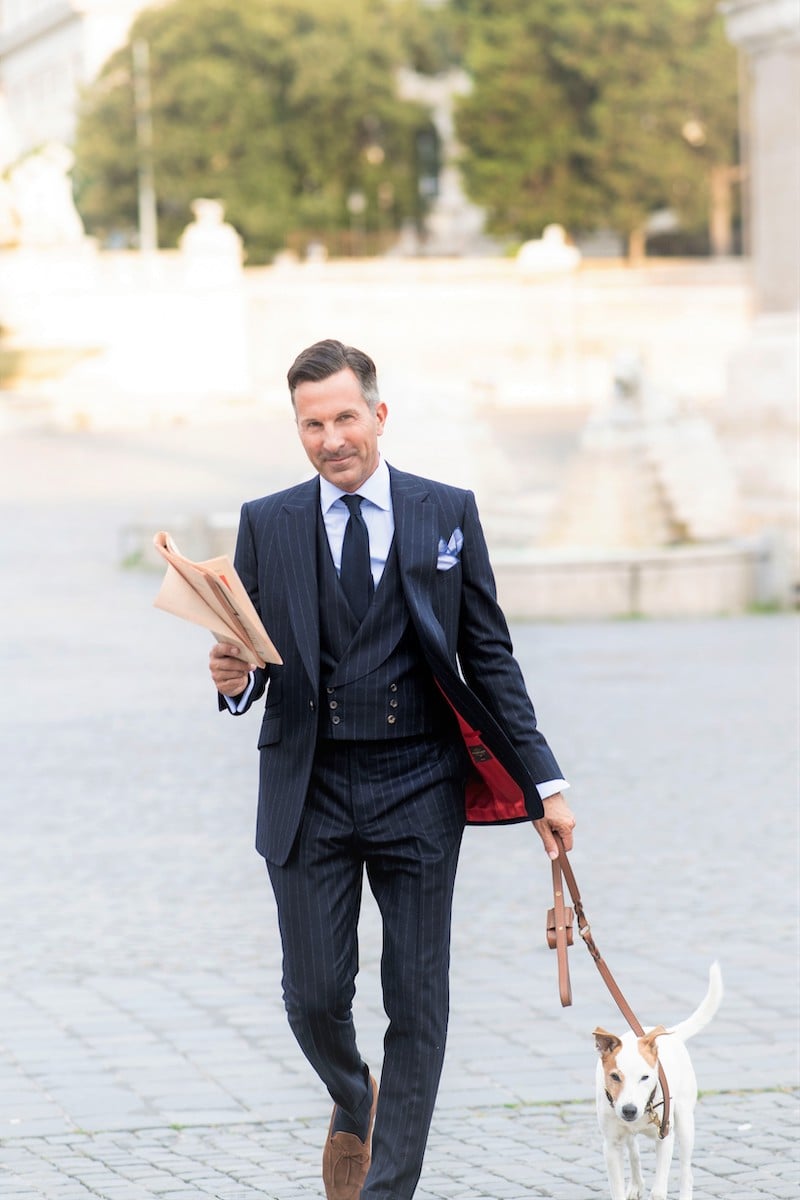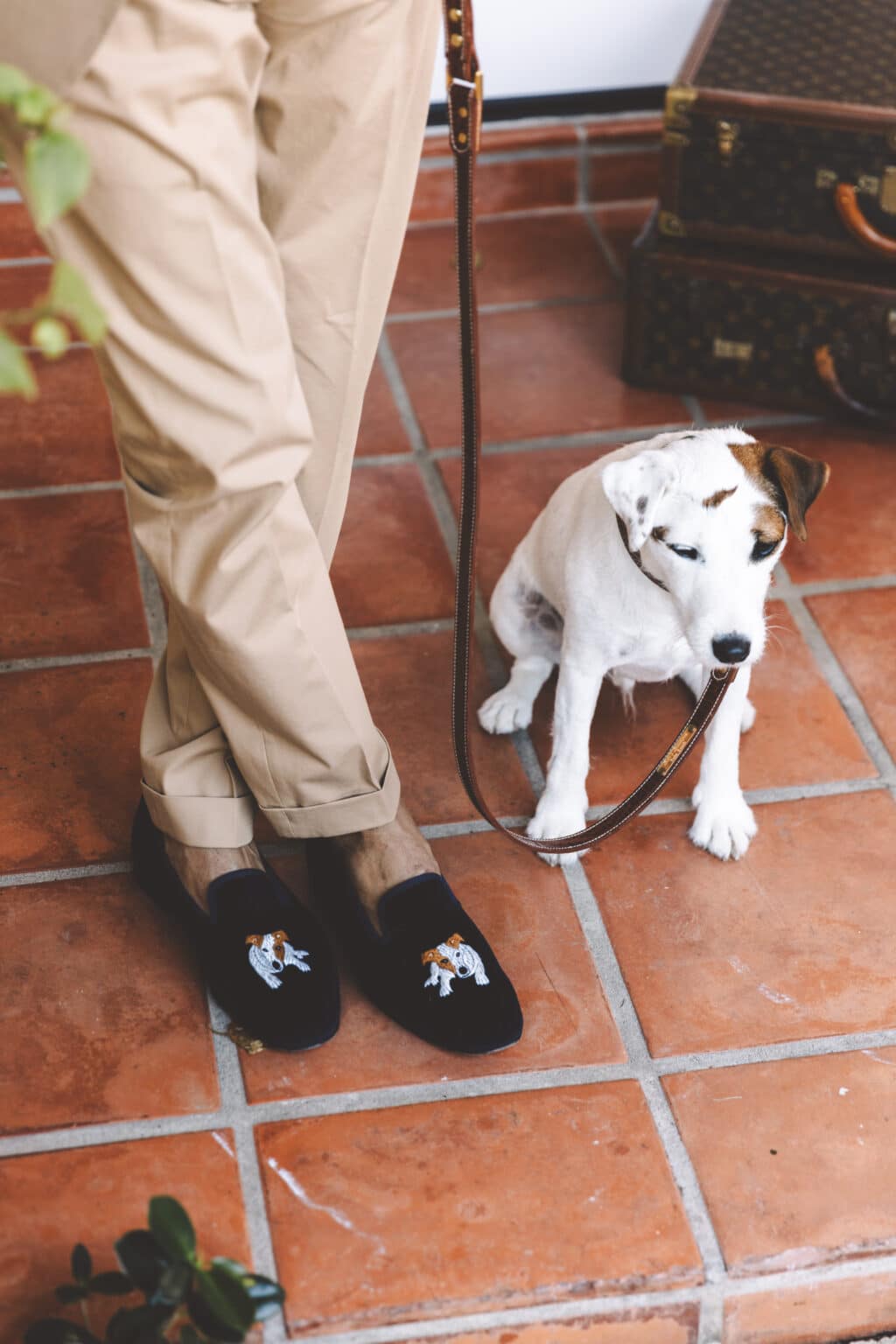- Finely Krafted Weekly Magazine / Inspiration, Sartorial
Aristotle Onassis
- Date:
Author: Freddie Anderson
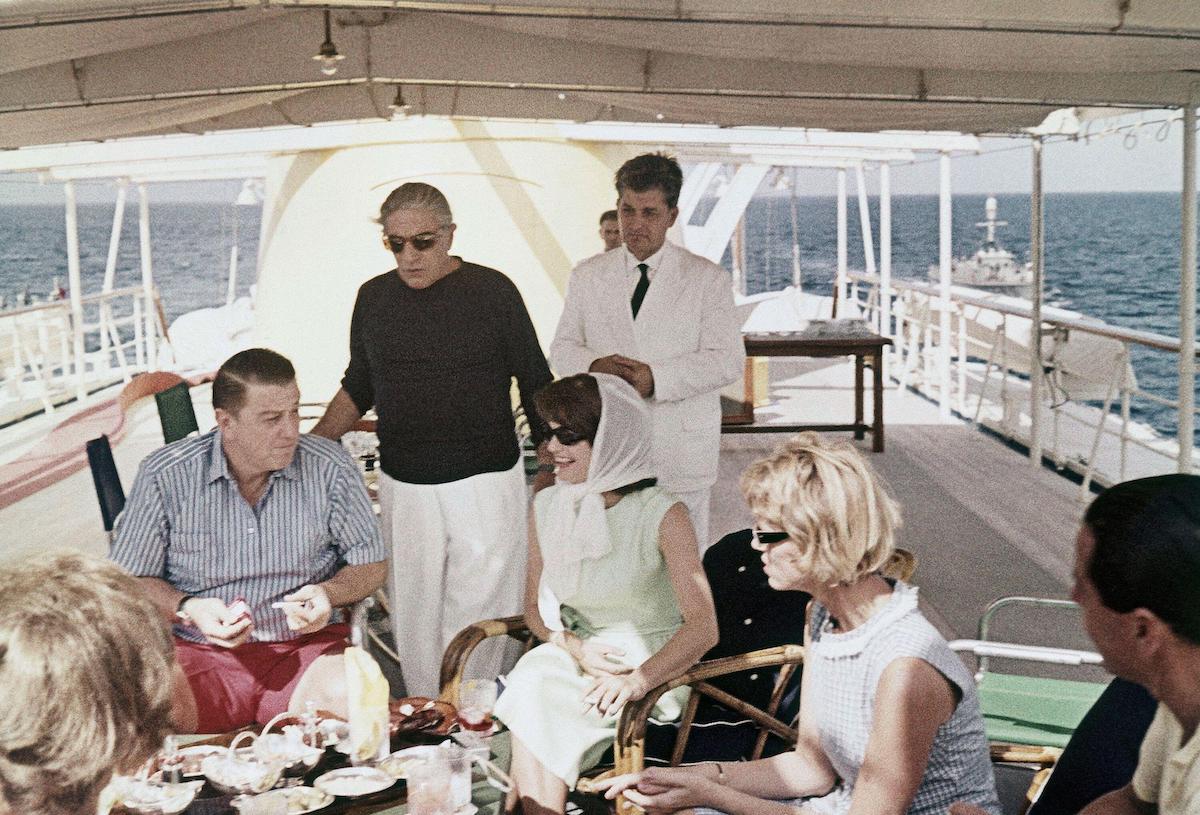
On 1st August 1963, Rudolf Nureyev and Margot Fonteyn were pictured ascending a bush-lined balustrade at the palatial Hotel de Paris, Monte-Carlo, whilst conversing with Aristotle Onassis and his glamorous long-term girlfriend, soprano Maria Callas. As the majority shareholder of Hotel de Paris through Société des Bains de Mer (SBM), a real estate corporation which ran the casino, Hôtel Hermitage and various other tourist attractions, one would have thought Nureyev and Fonteyn had the privilege to socialise with Onassis in a more ceremonial setting. It is true, they did, but their action in exerting themselves to speak with Onassis is an example of the enormity of his stature as a magnate in both haute bourgeoise business circles and the highest echelons of international society.
Born in Smyrna, present-day Izmir, Turkey, in 1906, his Greek father was a successful tobacco trader and later became head of the stock exchange in the Greek-dominated Turkish city. However in 1922, when the marauding Turkish army burned the Armenian and Greek quarters of Smyrna, the family lost everything, including many of their relatives to murder. Experiencing these unimaginable atrocities at such an early age evidently ingrained that resilience, ambition and creativity that he would utilise to a full extent throughout his life.
Fleeing the horrific war in a small boat, he eventually disembarked in Buenos Aires, Argentina, where it didn’t take him long to identify and exploit opportunities. He worked as a night-shift telephone operator for the British United River Plate Telephone Company, which enabled him to attend ritzy yacht clubs in the daytime and meet a host of well-to-do personalities. By overhearing international telephone conversations, he grasped a sufficient amount of foreign vocab, which in turn propelled him to seize his first opportunity. It was a time when Rudolph Valentino, known as the “Latin Lover” for his smouldering good looks and style, had caused a mania amongst ladies for the exotic Middle East. This phenomenon was largely ignited following his performance in the hit film, The Sheik (1921), and sequel The Son of The Sheik (1926). It was the elegant way with which Valentino operated his cigarette that gave Onassis the idea to create his own brand. He cleverly imported tobacco from Turkey and targeted the female market, which resulted in him earning his first million aged just 25.
Next stop was London. It still is the most important shipping centre in the world, and there Onassis further developed his Argentinian shipping company. Able to maintain a personal suite at The Savoy, he colossally surpassed the profitability from the cigarettes. After building the world’s first supertankers he was soon dubbed the “tanker king”. However, if Onassis built a 30,000-ton ship, his arch-rival, shipping tycoon Stavros Niarchos, would respond with one of 31,000 tons. And it was a rivalry that wasn’t confined to the sea – as reported with real enthusiasm and vigour by the tabloids.
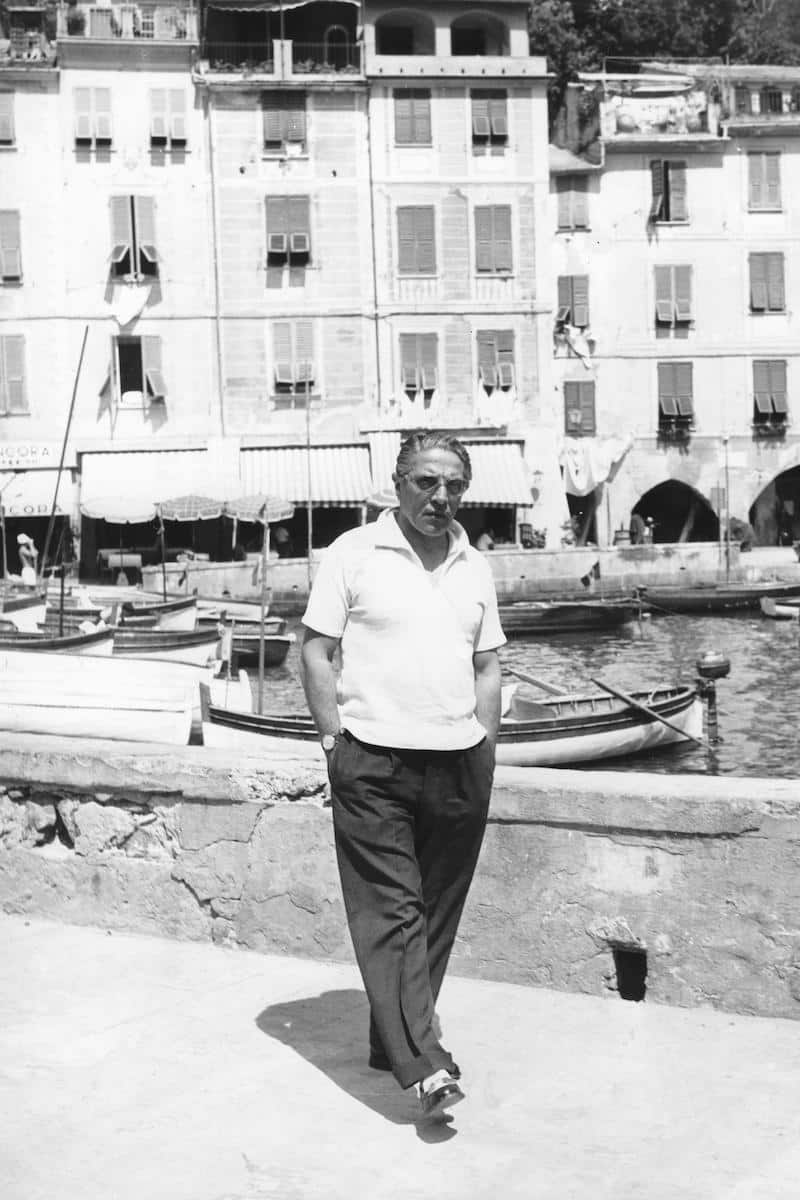
Onassis once said, “If women didn’t exist, all the money in the world would have no meaning.” Thankfully for Onassis, this outcome was never realised. Considered one of the world’s most beautiful women, Tina Livanos married Onassis in 1946. The daughter of Greece’s most powerful shipowner, Stavros Livanos, she was only 17 when they wed at a lavish wedding in New York. Onassis was 40, but if anything, he was beguiled by significant age gaps and it certainly wasn’t a flat trajectory. In 1934 he had met Ingeborg Dedichen, the attractive and wealthy daughter of a Norwegian aristocrat, who was 7 years his senior. In the midst of her second divorce, the on-off relationship with Onassis would last over a decade. But like nearly every love affair that Onassis engaged in, there appeared to be an element of self-advantage – usually to leverage his vast shipping fleet. Tremendously rich in her own right, with an endless list of powerful financial connections, Dedichen was the archetypal catch for Onassis.
“The secret of business is to know something that nobody else knows,” said Onassis. As early as 1930, he conducted a pioneering approach to taxation. He was using Monaco, Liberia, Lichtenstein and Panama two full decades before the multinational corporations discovered those coveted tax havens. Since 1297, Monaco has been ruled as a constitutional monarchy by the Grimaldi family. The coastal principality had reaped the rewards of gambling being illegal in France from 1836 to 1933. However, the financial ramifications of WW2 was so austere that the hallowed belle époque buildings began to crumble. As a friend and confident of Prince Rainier III, Onassis would be instrumental in Monte-Carlo turning back into a playground for Hollywood’s rich and famous, thus filling the coffers of the Monaco treasury beyond even pre-war levels. The red-letter day came when Prince Rainier married Grace Kelly – a historic union which may not have happened if Onassis hadn’t advised Rainier to marry a glamorous actress. And he was speaking from a place of authority, as his infamous 325-foot yacht, the Christina O, named after his and Tina’s daughter, was a favourite summer haunt of Marilyn Monroe, Greta Garbo, Elizabeth Taylor and Gloria Swanson, with Garbo and Swanson well-known for their frequent dalliances with Onassis.
Onassis’s influence was strong, yet so was that of his nemesis Niarchos. In 1947 Niarchos took Eugenia Livanos, Tina’s sister, as his third wife, although during this marriage Niarchos had an affair with Pamela Churchill – a lady who was also known during this time for her romance with Aly Khan in Paris. By 1961, Tina had tired of Onassis’s relationship with Maria Callas and they divorced. Yet in 1970, there was a sting in tale, with Eugenia found dead on Niarchos’s private island, Spetsopoula. Then, the following year Niarchos married Tina. A rather dark episode, but it was an example of the lengths Niarchos and Onassis would go to outweigh each-other.
Onassis had long been known to have an insatiable appetite for rich and famous women. Before a scheduled visit for Jacqueline Kennedy to Greece, President John F Kennedy summoned his top Secret Service agent Clint Hill to the Oval Office and ordered him to ‘not let Mrs Kennedy cross paths with Aristotle Onassis’. Already known for a relationship with Mrs Kennedy’s sister, Lee Bouvier, the fact that Onassis married Jacqueline in 1968, five years after the death of JFK, just ratifies his reputation as one of the most powerful womanisers of all time.
For people captivated and enchanted by the glitz and glamour of the French Riviera, and wanting to tastefully make an impact with their attire, then look no further than Onassis. Standing at just 5ft 5in, the same height as the Duke of Windsor and an inch taller than Adnan Khashoggi – a comparable tycoon in terms of high-living – it really was his rakish style that helped define his peerless legacy. It is true that there have been some well-regarded sartorial commentators who have claimed that short people shouldn’t wear double-breasted suits. But Onassis is a paragon proving that the thorny naysayers on this subject are wrong, and he earned this tag by wearing bespoke Caraceni inventions with his own personal panache. Even when on a casual stroll along Monaco’s port, near the lighthouse, he always wore the jacket buttoned-up. For a slightly portly figure, it instantly exhibits a silhouette. A current resident of Monaco and undeniable tastemaker, Alexander Kraft, through his brand Alexander Kraft Monte Carlo, has yet again demonstrated his innate stylistic attributes, mastering the inclusion of a silhouette of double-breasted suits. Spotless white trousers, unbuttoned polo shirts, sockless loafers and iconic Onao framed sunglasses became Onassis’s casual template for the Côte d’Azur. Aside from the Francois Pinton-made sunglasses, it is very possible to replicate Onassis’s outfit by turning to the impressive collection at AK MC.
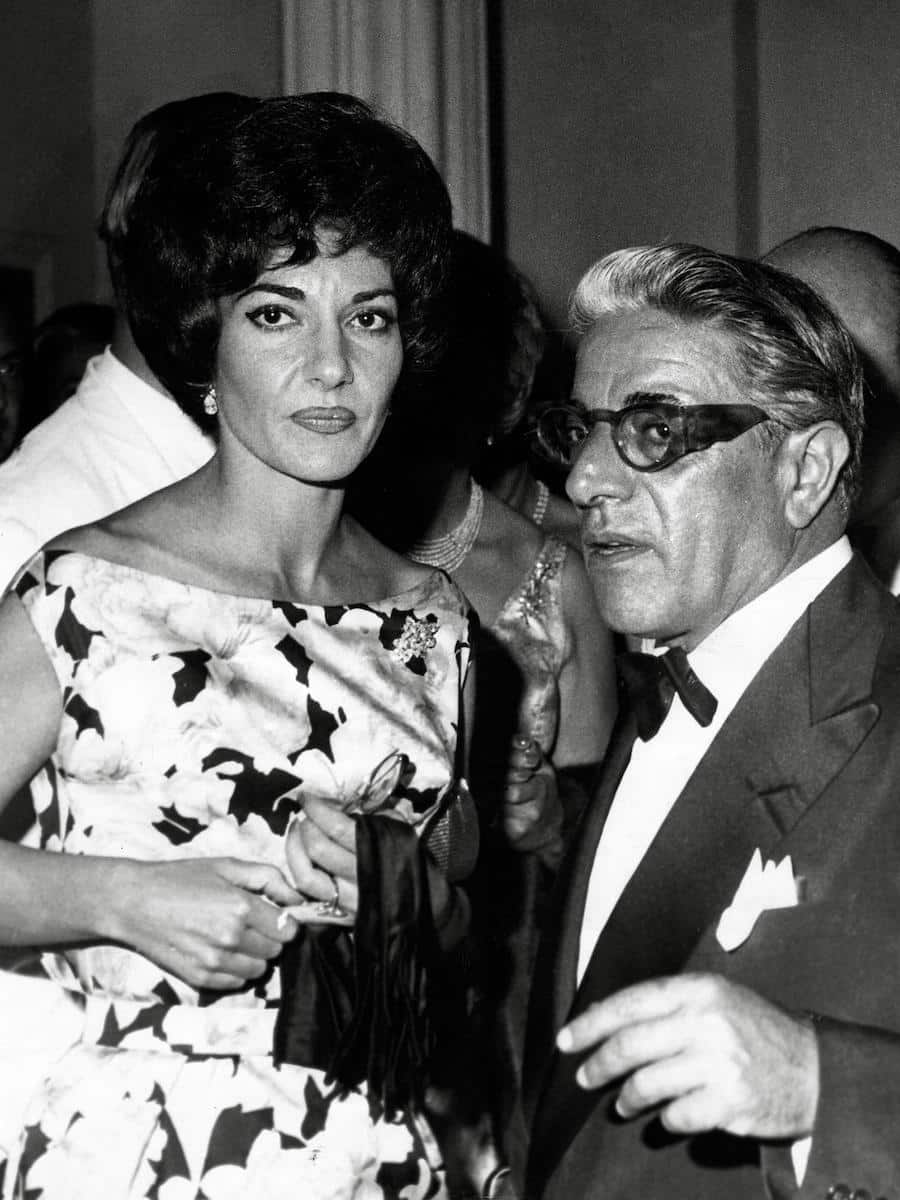
The practice of harmonizing components with the core of an outfit really is crucial in achieving your own personal aesthetic. For Onassis, he refrained from showy accessories, and operated under the guise of less is more. It’s a mantra that Alexander Kraft Monte Carlo has captured with real aplomb. Like Onassis, the brand benefits and is heralded for its designs offered in a limited palette of colours. Arriving in navy or ecru, the new Loro Piana wool and silk long-sleeved knitted polo shirt perfectly exemplifies the casual elegance that both doyens are renowned for.
It’s hard to single out a magnate that has had such a sizeable impact on business, fashion and personal affairs. Onassis should be an inspiration for every true entrepreneur, not of the digital kind but for real empire builders who actually mastermind the creation of real world companies. He certainly has been one for another long-time Monte Carlo resident, Alexander Kraft, the international CEO and indefatigable entrepreneur who manages his billion-dollar Sotheby’s International Realty France, Monaco brokerage network while also creating his Alexander Kraft Monte Carlo lines. In addition, he runs the hotel-restaurant “La Maison Bleue” and juggles various other activities encompassing Negronis, Cigars, cars and watches. In a world now suffering from a host of famous yet staid personalities, it wouldn’t do you any harm to use parts of Onassis’s life as motivation for your own destiny.
Similar Articles
VAT ID FR00285409991
New client offer
15% on your first order
Please sign up for the AK MC newsletter to receive exclusive insights into the world of Alexander Kraft as well as previews, exclusives and seasonal offers
